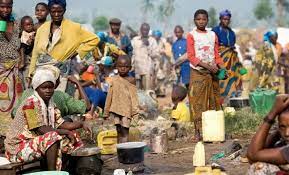The rise, in the third quarter of 2022, of the country’s public debt to N1.2 trillion, which also rocketed the nation’s total public indebtedness to N44.06 trillion is driven by new borrowings by the Federal Government to part-finance the deficit in the 2022 Appropriation Act, alongside new borrowings by sub-nationals.
And as Nigeria groans under the burden of debt servicing, which gulps the lion’s share of the nation’s revenue, the domestic debt outlook in many of the 36 states of the federation, and the Federal Capital Territory (FCT), as confirmed by the Debt Management Office (DMO) is increasingly worrisome.
The DMO’s latest revelation that the total public debt stock rose from N42.84 trillion recorded in Q2 to N44.06 trillion in Q3, 2022, indicated a 2.85 per cent increase quarter-on-quarter, while the country acquired a N1.22 trillion debt within three months.
In a breakdown, the DMO said the total public debt stock consists of domestic debt of N26.92 trillion and external debt of N17.15 trillion.
“Total public debt stock, which comprises the total domestic and external debt stock of the Federal Government of Nigeria, all states’ governments and the Federal Capital Territory stood at N44.06 trillion,” the statement by the DMO explained, adding, “In comparison, the total public debt figure as of June 30, 2022, was N42.84 trillion. The total domestic stock as of September 30, 2022, was N26.92tn while the total external debt stock as of September 30, 2022, was N17.15 trillion.
“The increase in the debt stock was largely due to new borrowings by the Federal Government to part-finance the deficit in the 2022 Appropriation Act, as well as, new borrowings by sub-nationals,” the office confirmed.
Without a commensurate change in their circumstance, rural dwellers are scandalised at the soaring domestic debt, which they say technically sentences unborn generations into slavery.
The pathetic picture painted by the collective domestic debt profile indicates that from N3.03 trillion in 2015, it ballooned to N5.28 trillion in the second quarter of 2022.
It is, however, unfortunate that this increased borrowing by the states has not translated into better living standards for their citizens.
The latest National Multidimensional Poverty Index Report, released by the National Bureau of Statistics (NBS) said that more than 133 million Nigerians, representing 63 per cent of the population are poor due to a lack of access to health, education, good living standards, and rising rate of youth unemployment.
Experts say the high poverty index is a result of the failure of many state and local governments, which are closer to the people to provide good governance and the needed social amenities that make life worth living.
The resort to borrowing by the state governments stems from their inability to generate enough revenue internally, a situation that was made worse by shocks from the COVID-19 pandemic, insecurity, and, of course, climate change.
Most of the states still depend on federal allocations to fund their budgets, as their internally generated revenue remains perennially weak. Unfortunately with the dwindling revenue of the Federal Government, the situation is getting worse gradually.
According to the World Bank, the states would lose about N18.8 billion in oil and gas revenues in 2022, as worsening revenue remittances from the Federation Account Allocation Committee (FAAC) increases their budgetary pressures.
The bank also warned that many states would be unable to meet up with their expenditures, given an increase in their debt servicing obligations.
Sharing the World Bank’s position is the Chief Executive Officer, Centre for the Promotion of Private Enterprise (CPPE), Muda Yusuf, who expressed fears that the states are headed for a debt crisis.
According to him, “The government’s actual revenue can hardly cover the recurrent budget, which implies that the entire capital budget and part of the recurrent expenditure are being funded from borrowing. This is surely not sustainable.”
A breakdown of states’ debts shows that the Lagos State government is leading the pack with N797. 304 billion of the N5. 281 trillion. In other words, the state owes 15 per cent of what is owed by the sub-nationals, as of June 30, 2022. Lagos has the highest internally generated revenue (IGR) (about N40 billion) every month.








